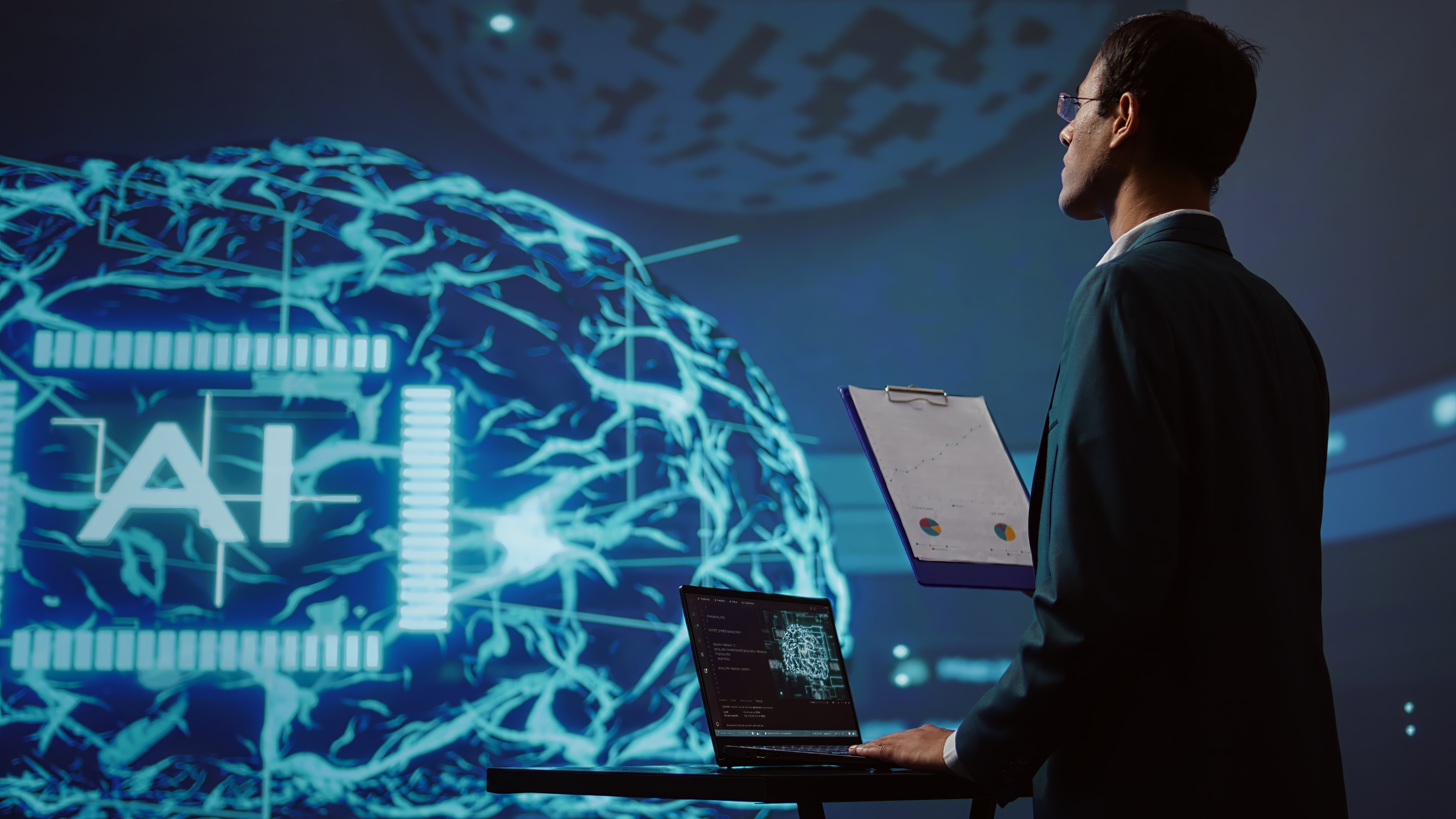ANN Network: A Complete Guide to Artificial Neural Networks
What are Artificial Neural Networks (ANN Network)?
Artificial Neural Networks (ANNs) are a foundational element of modern artificial intelligence (AI) and machine learning systems. Inspired by the human brain's structure and functionality, these networks are designed to mimic the brain’s ability to process information, making them incredibly powerful tools for tackling complex problems. At the core of an Artificial Neural Networks are layers of interconnected nodes, or neurons, which communicate with each other through weighted connections. These neurons are grouped into three main layers: the input layer, hidden layers, and the output layer. Each layer plays a specific role in processing and transforming data.
In an ANN, neurons work together to identify patterns, learn from data, and make predictions. The learning process involves adjusting the strength of the connections between neurons, known as weights, to improve the accuracy of the network's output. As the network is exposed to more data, it refines these connections and becomes better at recognizing patterns and making decisions.
Why is ANN Networks Important in AI?
Artificial Neural Networks are crucial in AI because they allow machines to automatically learn from data without explicit programming. This ability to learn and adapt makes them incredibly versatile, enabling applications across various industries. They can handle vast amounts of data and find hidden patterns that may be difficult or impossible for traditional algorithms to detect.
Applications of ANN Networks in Real Life
Artificial Neural Networks have numerous practical applications in real life, revolutionizing various fields. For example, in healthcare, ANN Neural Network are used to analyse medical images and diagnose diseases. In finance, they help detect fraud by recognizing patterns in transaction data. They are also widely used in speech recognition systems, such as virtual assistants like Siri and Alexa, where they interpret human speech and provide relevant responses.
How Do ANN Networks Mimic the Human Brain?
One of the key concepts in both biological and artificial neural networks is learning and adaptation. In the brain, neurons strengthen or weaken their connections through a process called synaptic plasticity, which helps improve memory and learning. Learning occurs through adjusting the weights of connections between neurons based on the input and output data, typically through back propagation and optimization techniques like gradient descent.
What are the Basics of an ANN Neural Network?
An ANN Neural Network (ANN) is a computational model inspired by the structure and function of the human brain. It is designed to recognize patterns, learn from data, and make decisions based on its training. The Artificial Neural Networks consists of interconnected layers of nodes, called neurons, which work together to process information. The network learns by adjusting the strength of the connections between these neurons.
What is a Neural Network?
At its core, a neural network is a system of interconnected units or nodes (similar to neurons in the brain) that work together to process information. Each neuron receives input, applies a mathematical function to it, and passes the result to the next layer of neurons. These networks typically consist of three main types of layers: the input layer, hidden layers, and the output layer. The input layer receives the data, the hidden layers process it, and the output layer produces the final result or prediction. Neural networks are designed to identify relationships within data and adapt based on the patterns they learn.
Components of an ANN: Neurons, Layers, and Connections
The key components of an ANN include neurons, layers, and connections. Each neuron performs a simple computation, but when connected in large networks, they can perform complex tasks. Neurons are organized into layers: the input layer takes in the raw data, the hidden layers process this data, and the output layer delivers the result. Connections between neurons, known as weights, determine the strength of the signal that is passed between them.
How Do ANN Networks Mimic the Human Brain?
Artificial Neural Networks are designed to function similarly to the human brain. Just like neurons in the brain communicate through synapses, neurons are connected through weighted links that transmit information. These networks learn from experience, refining their connections and improving over time. This ability to learn from data and adapt based on patterns is what makes ANNs powerful tools in AI, enabling them to solve a variety of complex problems like the brain does in real-world scenarios.
What are the Different Types of ANN Networks?
Artificial Neural Networks (ANNs) come in various types, each designed for different applications and tasks. These networks differ in their structure, learning algorithms, and how they process data. Some of the most common types of Artificial Neural Networks include feed forward neural networks, recurrent neural networks, convolutional neural networks, and generative adversarial networks. Each type has its unique advantages, depending on the problem at hand.
Feed forward Neural Networks
Feed forward Neural Networks (FNNs) are the simplest type of ANN. In this structure, information moves in one direction—from the input layer to the hidden layers and finally to the output layer. There are no cycles or loops in this architecture, which makes it a straightforward approach for problems where the relationship between inputs and outputs is static. Feed forward networks are commonly used in tasks like classification and regression where the output is directly related to the input.
Recurrent Neural Networks (RNNs)
Recurrent Neural Networks (RNNs) are designed for tasks that involve sequential data, such as time-series analysis, speech recognition, or natural language processing. Unlike feed forward networks, RNNs have loops that allow information to persist. This means that RNNs can remember previous inputs in the sequence and use that memory to influence future predictions. This makes them well-suited for tasks where context or historical data is crucial for accurate decision-making.
Convolutional Neural Networks (CNNs)
Convolutional Neural Networks (CNNs) are primarily used for image recognition and processing tasks. CNNs are designed to automatically and adaptively learn spatial hierarchies in data, particularly in images. They use layers called convolutional layers to filter input data and extract essential features, such as edges, textures, or shapes, before passing it through fully connected layers for classification. CNNs have revolutionized fields like computer vision by enabling machines to interpret visual data with human-like accuracy.
How ANN Neural Networks Work?
Artificial Neural Networks (ANNs) are complex systems that rely on a structured flow of information through layers of interconnected neurons to perform tasks like classification, prediction, and pattern recognition. Understanding work is key to appreciating their power and flexibility in AI applications. The flow of information through an ANN is a process of learning, transformation, and adaptation.
The Structure and Flow of Information
The structure of an ANN Neural Networks consists of layers of neurons that process information sequentially. Data enters through the input layer, passes through hidden layers where complex computations take place, and exits through the output layer as a prediction or classification. Each connection between neurons has a weight that determines the strength of the signal passed from one neuron to another. The flow of information through the network helps the model learns and adapt based on the data it is exposed to, ultimately improving its accuracy.
Input Layer, Hidden Layers, and Output Layer
An ANN typically has three main types of layers: the input layer, hidden layers, and the output layer. The input layer receives raw data and passes it to the next layer. The hidden layers, which may be numerous, perform computations on the data, applying transformations and extracting features. Finally, the output layer generates the result or prediction based on the processed information. The depth and complexity of an ANN are largely determined by the number of hidden layers, making deeper networks more capable of learning intricate patterns.
Activation Functions in ANN Networks
Activation functions play a crucial role in determining how neurons respond to input data. They introduce non-linearity into the network, allowing ANNs to solve complex problems that linear models cannot. Common activation functions include the sigmoid function, ReLU (Rectified Linear Unit), and tanh. These functions help the network learn and adapt to various types of data by controlling the output of each neuron based on its input.
What are the Advantages of Using ANN Networks?
Artificial Neural Networks (ANNs) offer several advantages that make them a powerful tool in the field of artificial intelligence (AI). From their adaptability to their robustness, ANNs can solve a wide range of complex problems across various industries. Below, we’ll explore some of the key benefits of using Artificial Neural Networks
Adaptability and Flexibility
One of the main advantages of Artificial Neural Networks is their adaptability and flexibility. They are designed to learn from data and adjust their internal parameters (weights) over time. This ability to learn and adapt makes them highly effective in dynamic environments where the data is constantly changing. Whether it's recognizing new types of images, understanding new speech patterns, or predicting trends based on evolving datasets, ANNs can adapt to handle new, unseen data.
Handling Complex Patterns and Data
ANNs excel at handling complex patterns and large volumes of data. Unlike traditional algorithms, which may struggle with high-dimensional or unstructured data, ANNs are capable of detecting intricate patterns in data that would be difficult for humans or other algorithms to spot. For example, in image recognition, CNNs (a type of ANN) can identify shapes, edges, and textures at multiple levels of abstraction, allowing them to recognize objects within an image.
What are the Challenges of ANN Networks?
While Artificial Neural Networks (ANNs) are powerful tools for solving complex problems, they come with their own set of challenges. These challenges can impact the performance, efficiency, and interpretability of Artificial Neural Networks, requiring careful attention during their design and implementation. Some of the key challenges include over fitting, computational complexity, and the interpretability of models.
Over fitting and under fitting
Over fitting and under fitting are two common problems faced during the training of Artificial Neural Networks. Over fitting occurs when the network learns the training data too well, including its noise and outliers, which leads to poor generalization on new, unseen data. This means that the network may perform excellently on the training data but fail to make accurate predictions in real-world scenarios.
Computational Complexity
Another challenge of using ANN networks is their high computational complexity, particularly when working with large datasets or deep networks (such as deep learning models). Training deep neural networks requires substantial computational resources, including powerful processors (like GPUs) and large amounts of memory. This can make training time-consuming and expensive, especially when scaling up to large datasets.
Interpretability of ANN Models
Interpretability is another significant challenge when working with Artificial Neural Networks. These networks are often referred to as "black boxes" because it is difficult to understand how they arrive at specific decisions or predictions. Unlike decision trees or linear regression models, where the decision-making process is transparent and easy to follow, ANNs involve complex layers of computation and non-linear transformations that make it hard to explain how a particular outcome was reached.
What are the Real-World Applications of ANN Networks?
Artificial Neural Networks (ANNs) have found a wide range of applications across various industries, thanks to their ability to learn from data, recognize patterns, and make predictions. These capabilities have made Artificial Neural Networks indispensable tools in solving complex problems in fields such as image recognition, natural language processing, predictive analytics, and autonomous systems.
Image Recognition
One of the most well-known applications of Artificial Neural Networks is in image recognition. Convolutional Neural Networks (CNNs), a specialized type of ANN, are particularly effective in this domain. CNNs are designed to automatically detect features in images, such as edges, textures, and shapes, and use these features to classify or identify objects within the image.
Natural Language Processing (NLP)
Artificial Neural Networks have significantly advanced the field of Natural Language Processing (NLP), which involves teaching machines to understand, interpret, and generate human language. Recurrent Neural Networks (RNNs) and Transformer models, which are specialized types of ANNs, are commonly used for tasks such as speech recognition, sentiment analysis, and machine translation.
Predictive Analytics and Data Modelling
Predictive analytics relies heavily on Artificial Neural Networks to forecast future trends based on historical data. By analysing patterns in large datasets, ANNs can make predictions about everything from stock market trends to customer behaviour. Businesses use predictive modelling to make data-driven decisions, improve marketing strategies, and optimize operations.
Autonomous Systems
Artificial Neural Networks are a key component of autonomous systems, such as self-driving cars and drones. These systems rely on ANNs to process data from various sensors (such as cameras and LiDAR) and make real-time decisions about navigation, object avoidance, and path planning. The ability of Artificial Neural Networks to adapt and improve over time makes them ideal for autonomous systems, as they learn from new experiences and refine their decision-making process.
What is the Future of ANN Networks in AI?
As Artificial Neural Networks (ANNs) continue to evolve, their impact on artificial intelligence (AI) is becoming increasingly profound. With advancements in technology, Artificial Neural Networks are set to play an even larger role in the development of AI, shaping the future of various industries and applications. Let's explore some of the key trends and potential breakthroughs in the future.
Advancements in ANN Technology
The field of ANN technology is advancing rapidly, with improvements in computational power, algorithms, and hardware. Modern innovations such as specialized hardware like GPUs and TPUs (Tensor Processing Units) are enabling faster and more efficient training of deep neural networks. Additionally, new algorithms are being developed to optimize training, reduce the need for massive amounts of labelled data, and enhance model performance.
The Role of ANN Networks in Deep Learning
ANN networks are the backbone of deep learning, a subset of AI that involves training networks with many layers (also known as deep neural networks). As deep learning continues to dominate AI research and applications, the role of Artificial Neural Networks will only grow. Deep learning models, including convolutional neural networks (CNNs) for image recognition and recurrent neural networks (RNNs) for language processing, are already transforming industries like healthcare, finance, and automotive.
Future Trends and Potential Breakthroughs
Looking ahead, expected to make significant strides in areas such as explainable AI, where researchers are focusing on making neural networks more interpretable and transparent. Additionally, hybrid models that combine the strengths of ANNs with other AI techniques, like reinforcement learning or symbolic AI, hold great potential.
Conclusion
In conclusion, Artificial Neural Networks are powerful tools that mimic the human brain’s learning process, allowing machines to solve complex problems across various industries. By understanding key concepts like neurons, layers, activation functions, and learning processes, you can grasp how ANN networks work and their real-world applications. Learning about ANNs is essential for anyone interested in AI, as they are fundamental to many cutting-edge technologies. To get started, explore learning resources such as online courses, tutorials, and practical projects that delve into the world of ANN neural networks and their transformative potential in AI.









